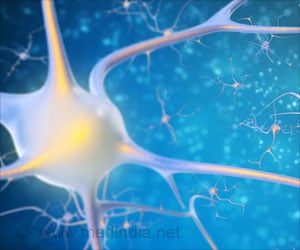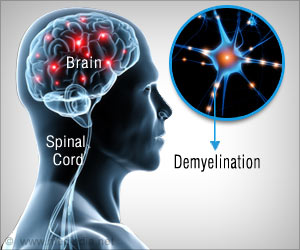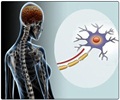Multiple sclerosis is a disorder in which the immune system attacks brain, spinal cord and optic nerves, damaging the fatty substance that insulates nerve fibers.

‘The Multiple Sclerosis Foundation reveals that an estimated 400,000 people in the United States and 2.5 million people worldwide have the disease.’





MS is a disorder in which the immune system attacks brain, spinal cord and optic nerves, damaging the fatty substance that "insulates" nerve fibers and interrupting nerve impulses. An estimated 400,000 people in the United States and 2.5 million people worldwide have the disease, according to the Multiple Sclerosis Foundation. An infusion of spleen cells coupled with an autoantigen completely prevented EAE in a mouse model, said Chang-Qing Xia, M.D., Ph.D., a research assistant professor in the UF College of Medicine's department of pathology, immunology and laboratory medicine. The same method also "dramatically reversed" the disease in its early stages, researchers found. The findings were published recently in the Journal of Immunology Research.
The approach used to treat autoimmune diseases isn't new. But Xia and his collaborators from Capital Medical University in China coupled the autoantigens to the spleen cells using a different chemical known as sulfo-SMCC, or SMCC, that is already approved by the U.S. Food and Drug Administration for drug delivery in several clinical trials. Compared with the previously reported autoantigen-coupling method known as EDCI, this method makes the process faster, easier and less toxic to cells, Xia said.
While EAE in animals isn't identical to MS, Xia said there are enough similarities to believe that the same immunotherapy approach could eventually be used to treat humans. "The most important thing is that these findings are highly translatable to the clinic," Xia said.
This is how the process works: Protein fragments of the nerve insulation substance known as myelin are coupled with spleen cells and injected into mouse models. After more than two months, researchers found that the treatments had completely prevented EAE from developing. Likewise, the same approach also reversed EAE in its early stages. Researchers believe that the spleen cell-autoantigen combination activates the production of helpful immune system cells while suppressing the disease-causing activities of other cells linked to autoimmune diseases.
Advertisement
If used in humans someday, it's likely the protein fragments known as autoantigens would be coupled to peripheral white blood cells and delivered by transfusion. The same principle that makes the autoantigen therapy effective against EAE in mice should be able to benefit humans, according to Xia.
Advertisement
Source-Eurekalert













